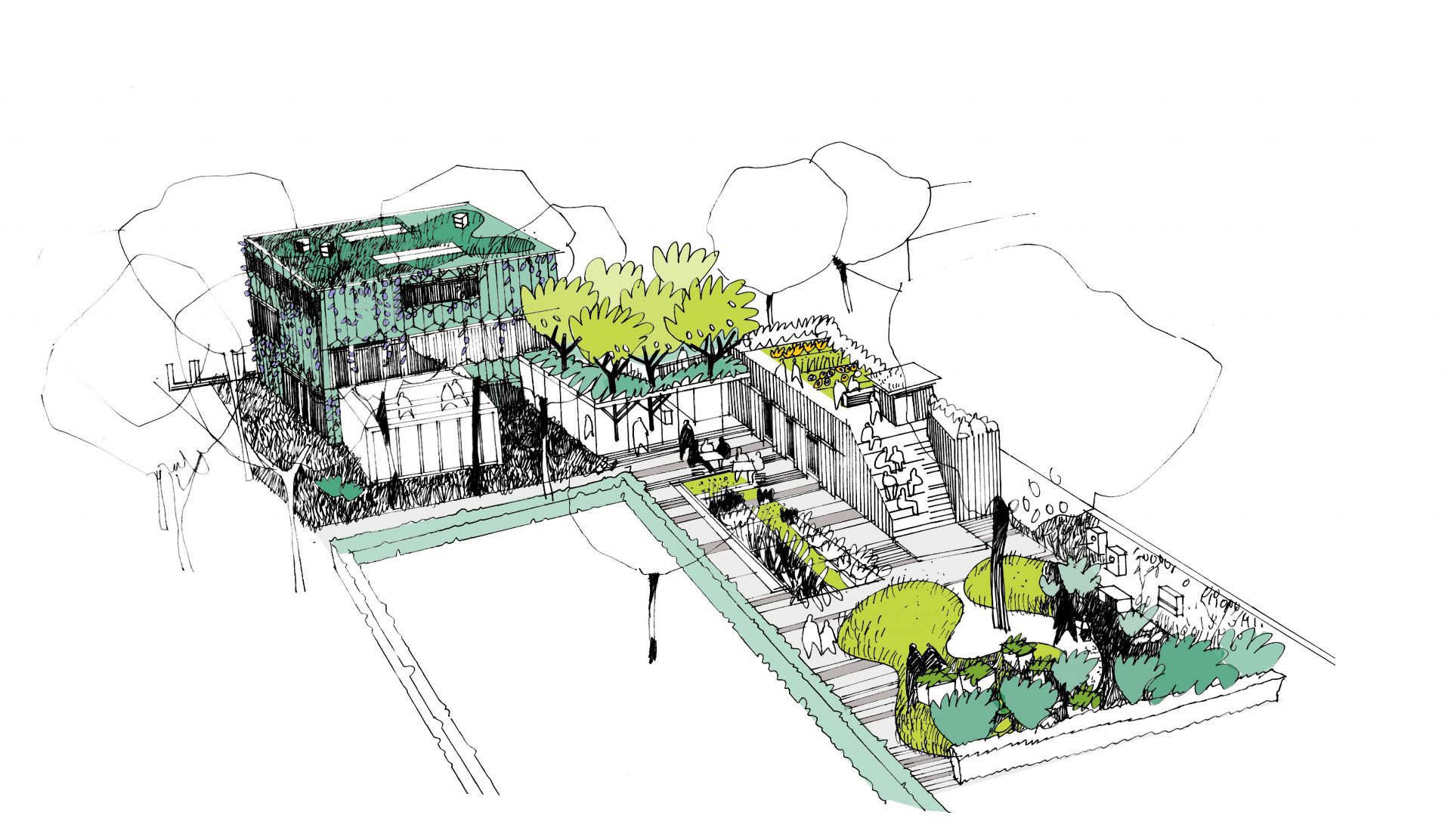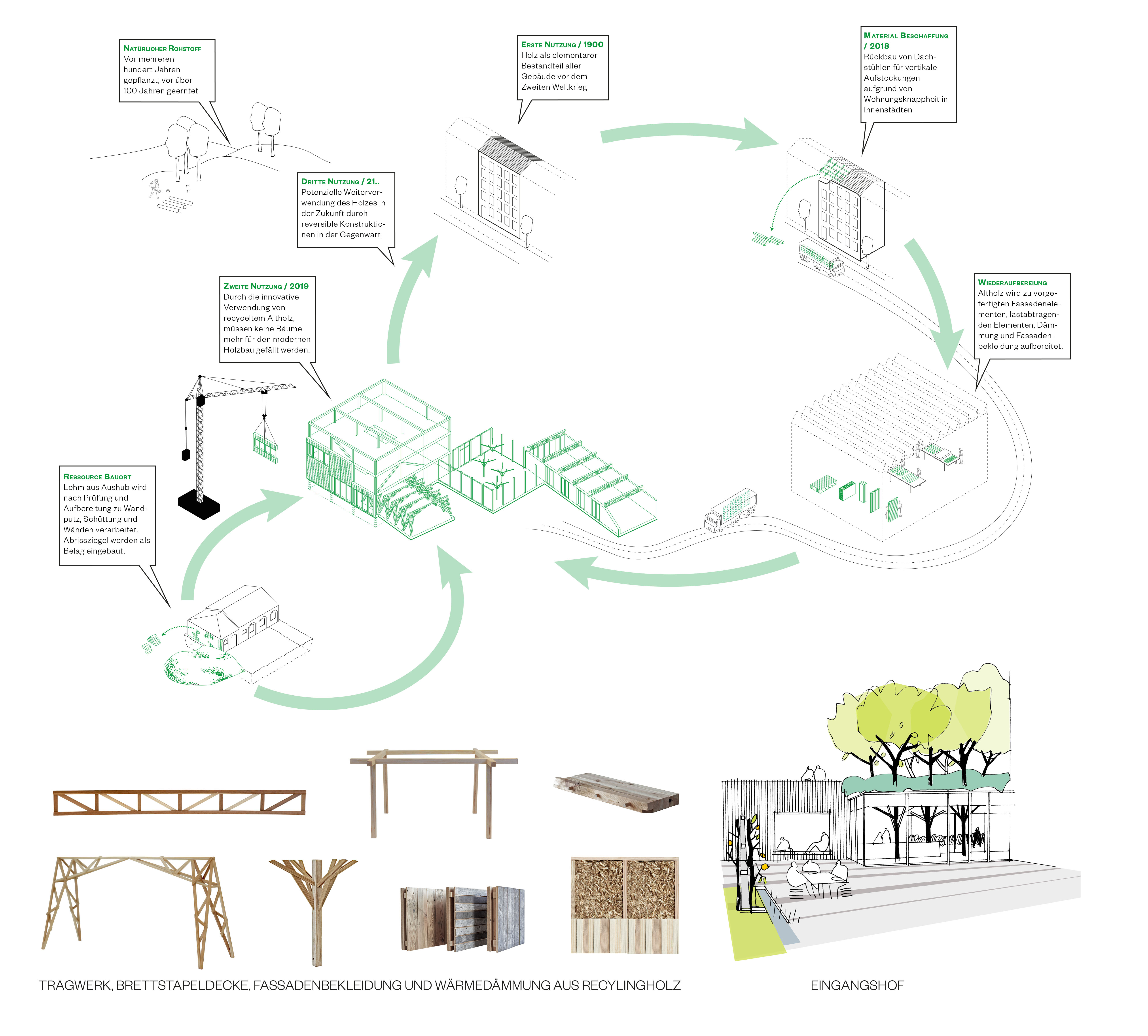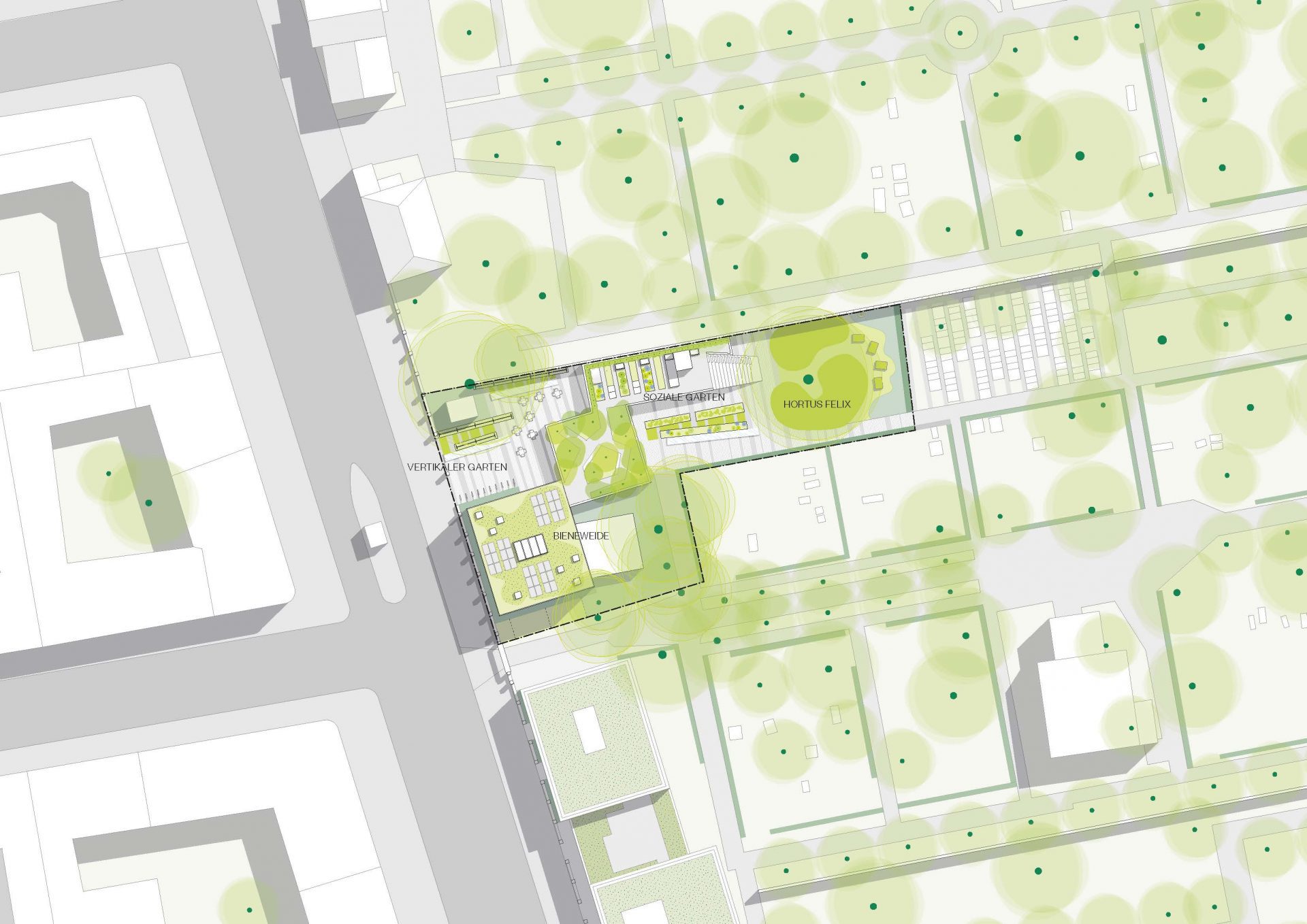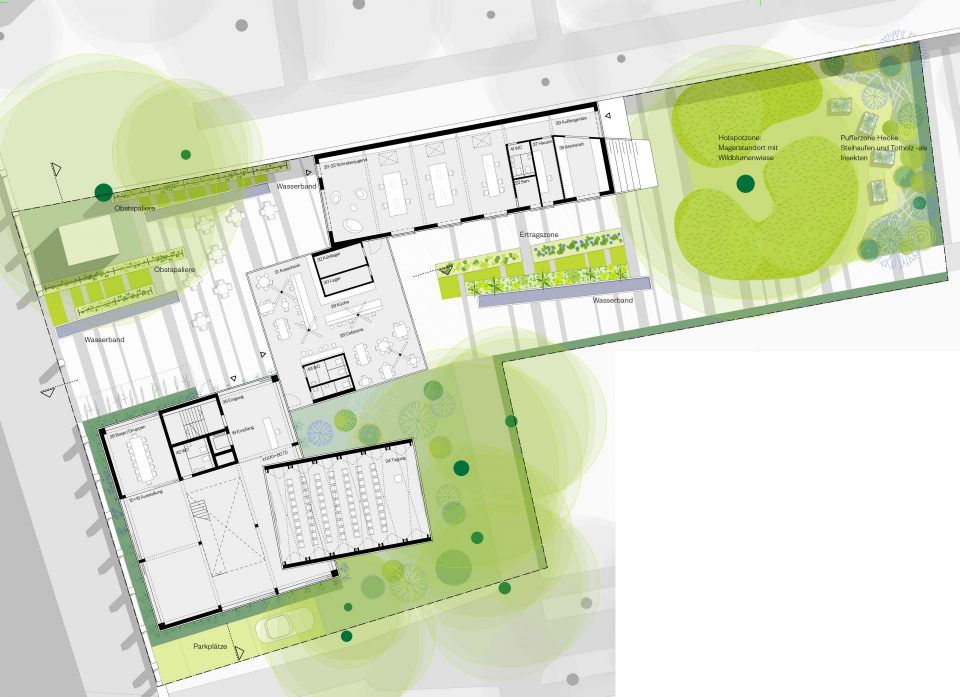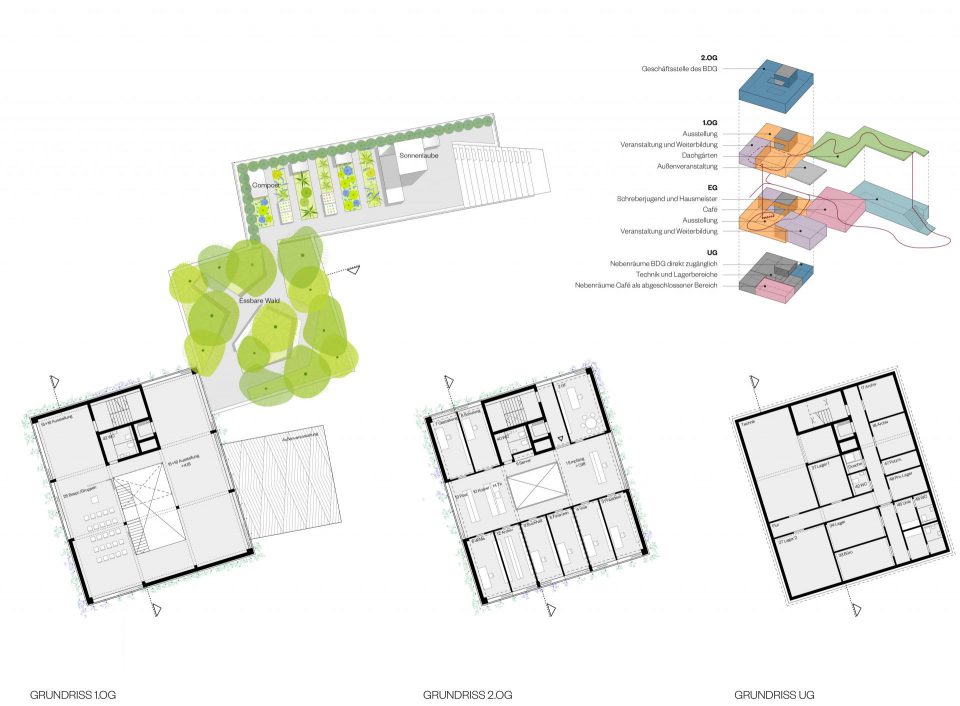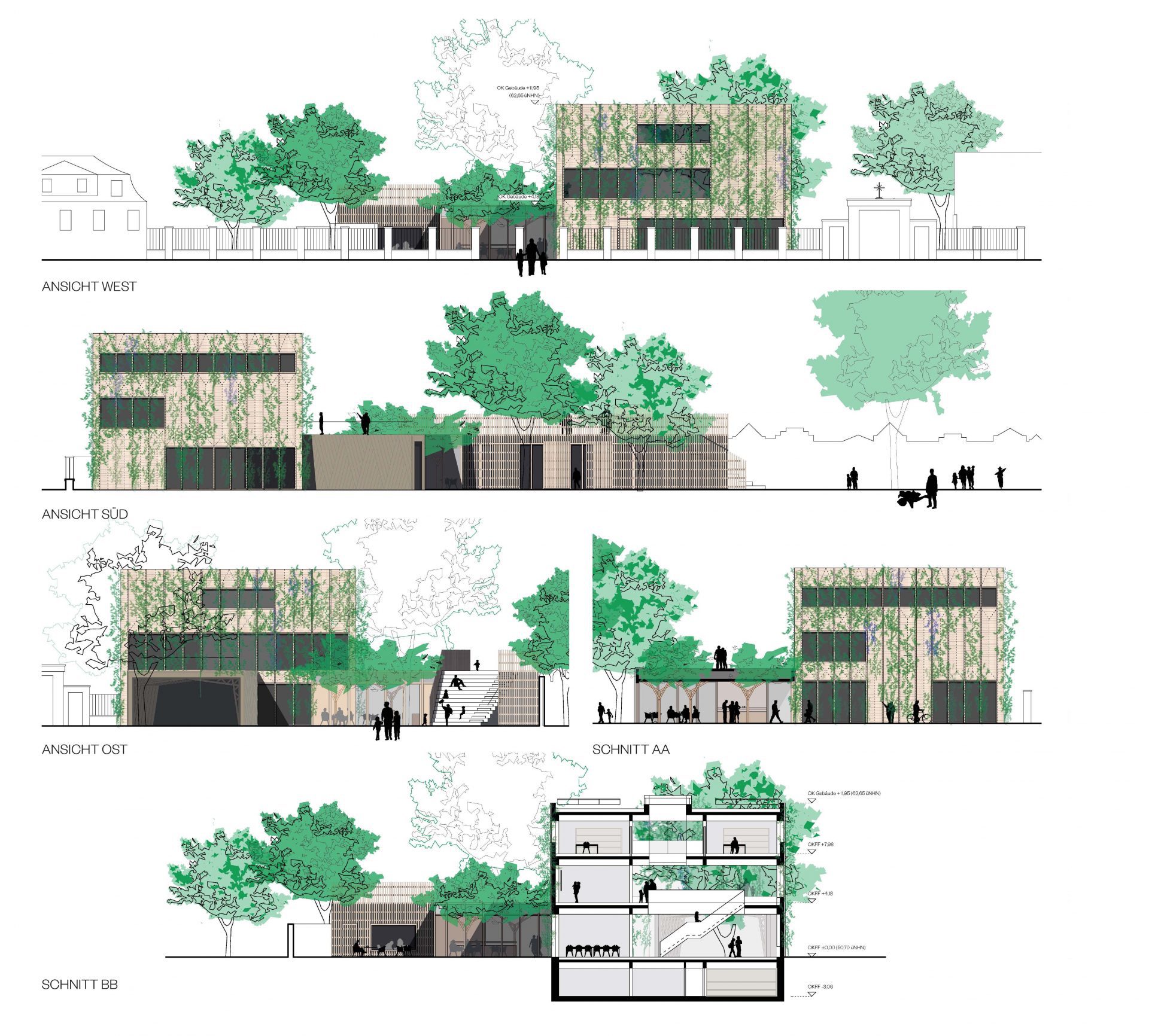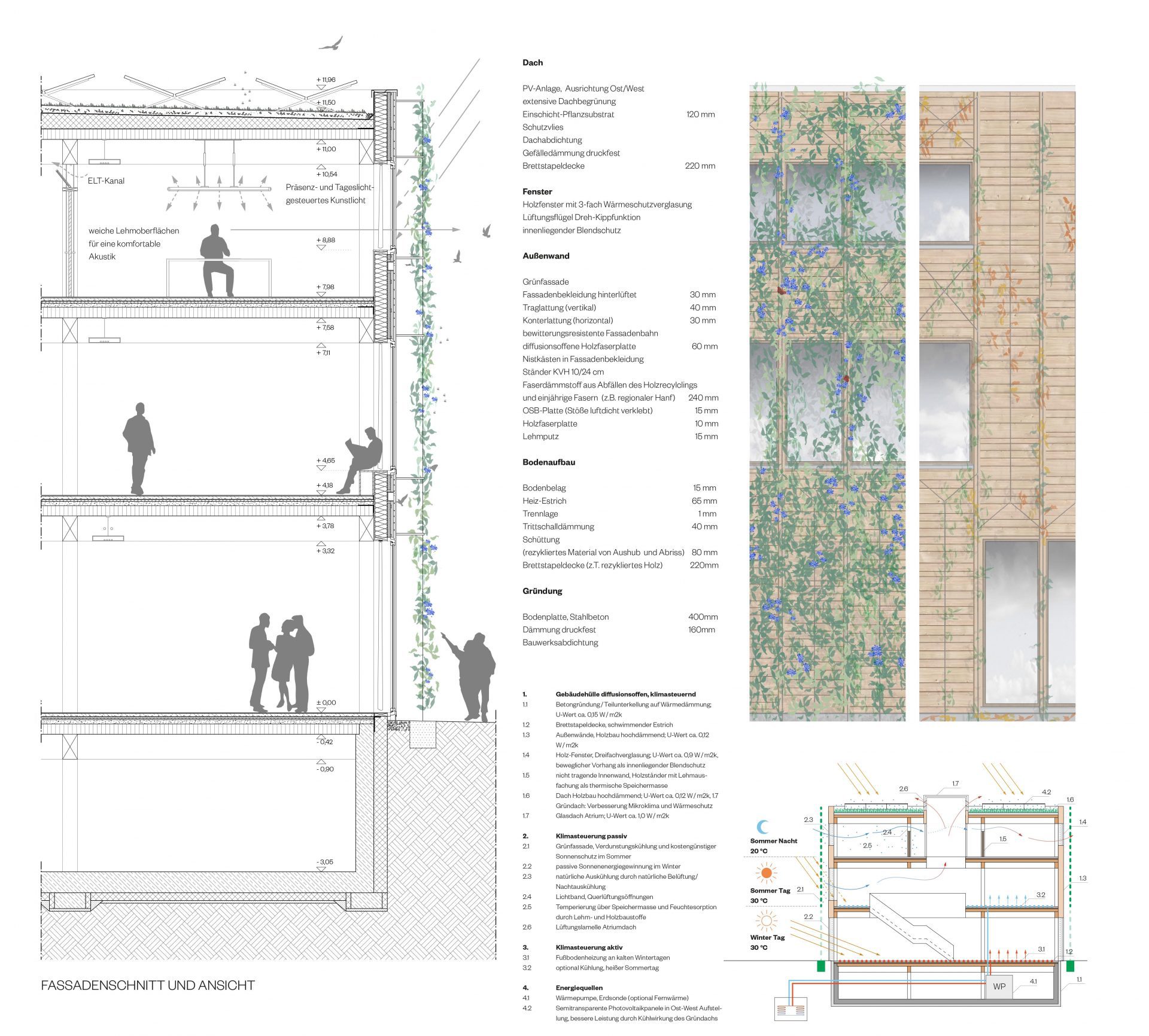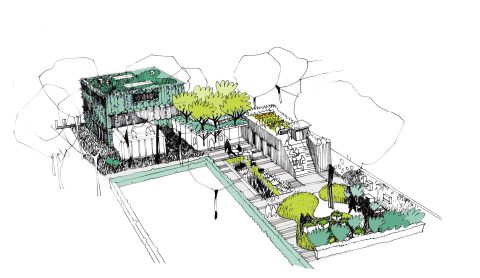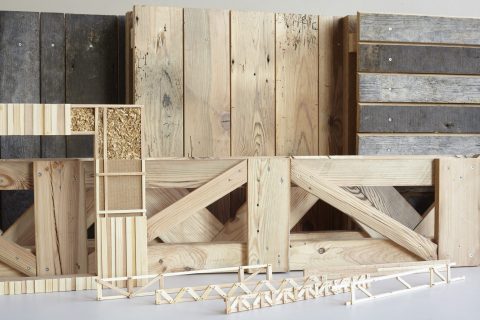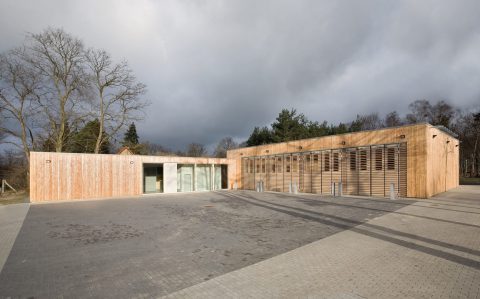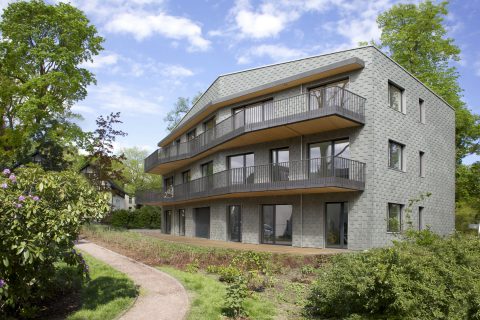A gardener thinks in cycles. Builders should do the same. Today, almost one hundred percent of the waste wood produced by conversion and dismantling measures is used for thermal recycling. A material that was planted several hundred years ago, harvested over one hundred years ago and processed into a building element, is burned!
If, however, one understands material – including wood that has already been processed into building elements in the past – as a valuable resource after its use in a building instead of as a waste, there is an opportunity to make these materials usable again for construction through targeted recycling or upcycling. With this mindset, one can reapply the cyclical principle of gardening to building. It is feasible to build a house that is resource-optimized or even resource-positive. The new house of the German allotment association is such a house! The division of the facility into a total of four buildings, each with very different requirements for space and construction, creates an ensemble of four case studies on building with wood. With this variety – completely following the slogan “small gardens, large variety” – the pilot project presents itself less as a universal prescription, but rather an invitation to think and act from here further – to the fifth, sixth, seventh case study at another place.
An innovative timber construction that does not fall trees! Through the innovative use of regional, recycled used wood, no more trees have to be cut for modern timber construction. There are multiple benefits to this method that allow the valuable resource of wood to continually take part in new construction cycles, thus prolonging the CO2 storage of the material: there are no CO2 intensive transport routes, it can be reused intelligently multiple times, and it is proven to hold zero pollutants. The small pieces of coniferous wood to be expected are optimally used by modern load-bearing structures and joining techniques and enable large spans. The prefabricated components are reversibly planned and connected in order to enable future use.
More Information | Competition appraisal
‘Stadt im Wandel – Stadt der Ideen’ 2020 | Honorary Mention


